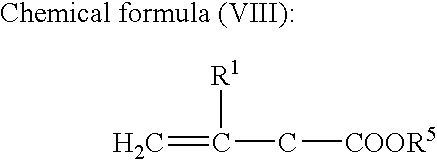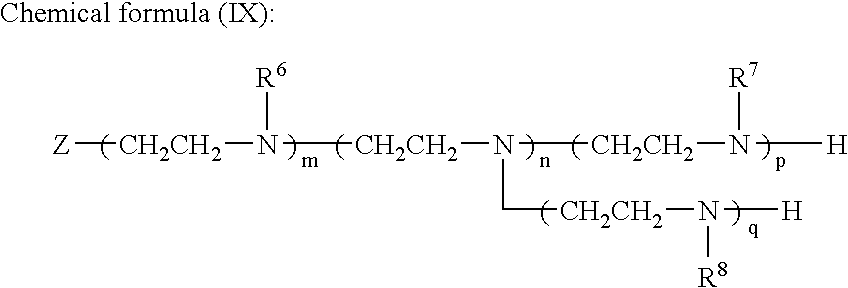Label for in-mold forming and resin container with the label
a technology applied in the field of in-mold forming and resin containers with labels, can solve the problems of high container loss, high cost, and easy peeling of labels from containers, and achieve satisfactory adhesion and suitability for printing, cutting, etc.
- Summary
- Abstract
- Description
- Claims
- Application Information
AI Technical Summary
Benefits of technology
Problems solved by technology
Method used
Image
Examples
production example 1
Production of Label (1)
[0109]A resin composition (A) (shown in Table 2) composed of 65 parts by weight of PP1 described in Table 1, 10 parts by weight of HDPE described in Table 1, and 25 parts by weight of calcium carbonate described in Table 1 was melt-kneaded with an extruder and then extruded at 250° C. through a die into a sheet form. This sheet was cooled to about 50° C. This sheet was reheated to about 150° C. and then longitudinally stretched in a stretch ratio of 4 by means of peripheral-speed differences among rolls. Thus, a uniaxially stretched film was obtained.
[0110]On the other hand, a composition (B) (shown in Table 2) composed of 45 parts by weight of PP2 described in Table 1, 5 parts by weight of HDPE, 48 parts by weight of calcium carbonate, and 2 parts by weight of titanium oxide powder described in Table 1 was melt-kneaded with an extruder at 240° C. This melt was extruded through a die into a film form and superposed on a surface of the longitudinally stretched ...
production example 2
Production of Label (2)
[0121]The same procedure as in Production Example 1 was conducted, except that an aqueous solution of the quaternary-nitrogen-containing acrylic terpolymer (a) was applied in an amount of 0.1 g per unit area (m2) in terms of antistatic agent amount on a dry solid basis to form an antistatic layer (III) on the heat-sealable resin layer (II) side. Thus, a label (2) was obtained. The wettability indexes of the surfaces of the thermoplastic resin film base layer (I) and antistatic layer (III) were 70 mN / m and 50 mN / m, respectively.
production example 3
Production of Label (3)
[0122]The same procedure as in Production Example 1 was conducted, except that an aqueous solution containing 1.0% by weight the quaternary-nitrogen-containing acrylic terpolymer (a) and 0.5% by weight epichlorohydrin adduct of a water-soluble polyamine-polyamide (c) (“WS-4002” (tradename) manufactured by Seiko PMC Corp.) was applied in an amount of 0.01 g per unit area (m2) in terms of antistatic agent amount on a dry solid basis to form an antistatic layer (III) on the heat-sealable resin layer (II) side. Thus, a label (3) was obtained. The wettability indexes of the surfaces of the thermoplastic resin film base layer (I) and antistatic layer (III) were 70 mN / m and 38 mN / m, respectively.
PUM
| Property | Measurement | Unit |
|---|---|---|
| temperatures | aaaaa | aaaaa |
| porosity | aaaaa | aaaaa |
| porosity | aaaaa | aaaaa |
Abstract
Description
Claims
Application Information
 Login to View More
Login to View More - R&D
- Intellectual Property
- Life Sciences
- Materials
- Tech Scout
- Unparalleled Data Quality
- Higher Quality Content
- 60% Fewer Hallucinations
Browse by: Latest US Patents, China's latest patents, Technical Efficacy Thesaurus, Application Domain, Technology Topic, Popular Technical Reports.
© 2025 PatSnap. All rights reserved.Legal|Privacy policy|Modern Slavery Act Transparency Statement|Sitemap|About US| Contact US: help@patsnap.com



